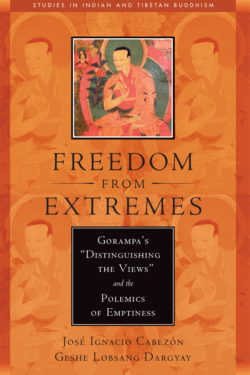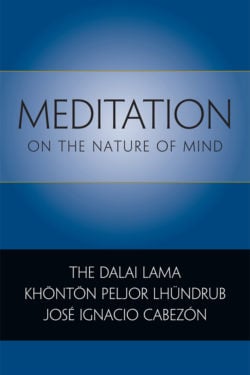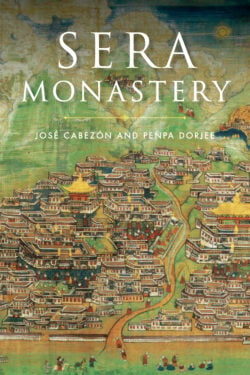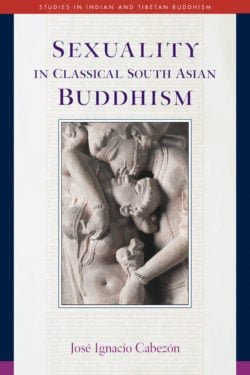José I. Cabezón

José Ignacio Cabezón (author of Sexuality in Classical South Asian Buddhism and co-author of Freedom from Extremes) was co-chair of the Studies in Indian and Tibetan Buddhism series from 2005 to 2022. He is XIVth Dalai Lama Professor of Tibetan Buddhism and Cultural Studies at the University of California Santa Barbara. Cabezón studied physics as an undergraduate at Caltech, trained as a monk at Sera Monastery in India, and translated for the Dalai Lama into Spanish on several occasions. He earned his PhD from the University of Wisconsin–Madison in 1987. He is the author or editor of more than a dozen books on Indo-Tibetan scholasticism, Madhyamaka philosophy, Buddhism and sexuality, and Tibetan ritual. His co-authored Sera Monastery, also published by Wisdom, is a history of one of the great monastic universities of Tibet from its founding to the present. Cabezón served as president of the American Academy of Religion in 2020.
Books, Courses & Podcasts
Freedom from Extremes
What is emptiness? This question at the heart of Buddhist philosophy has preoccupied the greatest minds of India and Tibet for two millennia, producing hundreds of volumes. Distinguishing the Views, by the fifteenth-century Sakya scholar Gorampa Sönam Sengé, is one of the most important of those works, esteemed for its conciseness, lucidity, and profundity. Freedom from Extremes presents Gorampa’s elegant philosophical case on the matter of emptiness here in a masterful translation by Geshe Lobsang Dargyay.
Gorampa’s text is polemical, and his targets are two of Tibet’s greatest thinkers: Tsongkhapa, founder of the Gelug school, and Dölpopa, a founding figure of the Jonang school. Distinguishing the Views argues that Dolpopa has fallen into an eternalistic extreme, whereas Tsongkhapa has fallen into nihilism, and that only the mainstream Sakya view—what Gorampa calls “freedom from extremes”—represents the true middle way, the correct view of emptiness. Suppressed for years in Tibet, this seminal work today is widely regarded and is studied in some of Tibet’s greatest academic institutions.
Gorampa’s treatise has been translated and annotated here by two leading scholars of Tibetan Buddhist philosophy, and a critical edition of the Tibetan text on facing pages gives students and scholars direct access to Gorampa’s own words. José Cabezón’s extended introduction provides a thorough overview of Tibetan polemical literature and contextualizes the life and work of Gorampa both historically and intellectually. Freedom from Extremes will be indispensable for serious students of Madhyamaka thought.
Learn more about the Studies in Indian and Tibetan Buddhism series.
Meditation on the Nature of Mind
“We all have the same human mind—each and every one of us has the same potential. Our surroundings and so forth are important, but the nature of mind itself is more important… To live a happy and joyful life, we must take care of our minds.”—His Holiness the Dalai Lama
At the heart of this book is The Wish-Fulfilling Jewel of the Oral Tradition, an accessible and nonsectarian treatise on penetrating the nature of mind by Khöntön Peljor Lhündrub, a teacher of the Fifth Dalai Lama. His Holiness the Fourteenth Dalai Lama’s broad-ranging overview of this work insightfully distills some of the most central themes of Buddhism: why the mind is so essential to the tradition, what distinguishes the levels of consciousness, and how different schools of Tibetan Buddhism elaborate those distinctions. Profound and erudite, it brings the reader closer to a fresh and direct experience of Buddhism’s central truths.
Along with his lucid translations, José Cabezón provides an introduction to the root text and presentations of the life and works of Khöntön Rinpoche, all richly annotated.
- Read Khöntön Peljor Lhündrub’s biography at the Treasury of Lives.
Sera Monastery
The definitive history of Sera Monastery, one of the great monastic universities of Tibet, from its founding to the present.
Founded in 1419, Sera Monastery was one of the three densas, the great seats of learning of the Geluk school of Tibetan Buddhism. With over 9,000 monks in residence in 1959, it was the second largest monastery in the world. Throughout its history, Sera has produced some of Tibet’s most important saints, scholars, and political leaders.
The scholars José Cabezón and Penpa Dorjee begin Sera Monastery with the history of monasticism from the time of the Buddha through its early development in Tibet and then tell the 600-year story of Sera from its founding to the present. They recount how the monastery grew and evolved during the centuries, how it has fared under Chinese rule, and how it was transplanted in the Tibetan refugee camps of South India. We are introduced to some of Sera’s most important lamas and hermits, as well as its curriculum, yearly calendar, the daily life of scholar monks, and the role Sera monks played in the political history of Tibet.
Former Sera monks themselves, Cabezón and Dorjee demonstrate their firsthand knowledge of the monastery, its traditions, and daily life on every page. Scrupulously researched over decades, Sera Monastery is the most comprehensive history of a Tibetan monastery ever written in a Western language.
Sexuality in Classical South Asian Buddhism
In this extremely readable book, Jose Cabezon, the XIVth Dalai Lama Professor at the University of California Santa Barbara, takes us on a tour-de-force journey through Buddhist literature. More than twenty-five years in the making, this detailed sourcebook on the depiction of sexual identity, desire, restriction, and deviance in the classical South Asian traditions is filled with both engaging translations and original and provocative analysis. Cabezón speaks not as a distant observer but from within the tradition as a Buddhist “theologian,” keeping the material relevant to the modern reader, but he does so with a steady and unsentimental gaze. His knowledge is so broad that he is able to marshal an incredible array of scriptures, legal texts, and philosophical treatises that will be of immense interest not only to scholars of both Buddhism and gender studies but also to lay readers who want to learn more about traditional Buddhist attitudes toward sex. This singular book will stand as a landmark in the field for many years to come.
Learn more about the Studies in Indian and Tibetan Buddhism series.




